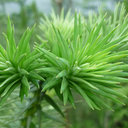[The differential expression of the genes of the key enzymes involved in phenolic compound metabolism in rice (Oryza sativa L.) under different nitrogen supply].
Keywords
Abstract
Differential expression of the key genes controlling phenolic metabolism in allelopathic and non-allelopathic rice accessions was investigated under two nitrogen supply levels (lower and normal) using fluorescence quantitative-polymerase chain reaction (FQ-PCR) (Figs.2, 3). The results indicated that 9 key enzyme genes concerned were mediated by lower nitrogen level (Table 2). All of the nine genes (Table 1, Fig.4), were up-regulated by 1.9-5.4 times of the relative gene expression amounts in allelopathic rice accession, 'PI312777' under the lower nitrogen condition compared with their controls, of which PAL gene showed the highest relative gene expression amount with 5.4 times of the relative gene expressions compared with the control, while in non-allelopathic rice Lemont, seven genes were down-regulated by 29%-72% under lower nitrogen supplies compared with their controls and only two genes, i.e., phenylalanine ammonia-lyase and cinnamoyl-CoA genes were up-regulated, which however were a decrease of 22% and 74% over those in allelopathic rice accession (Table 2). These findings strongly suggest that the increase of allelopathic potential induced by 1/4 nutrient stress was responsible for enhanced phenolic compound synthesis metabolism.


